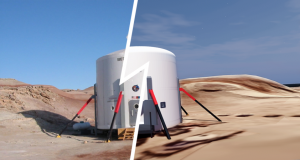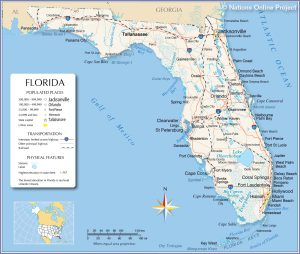James Webb Space Telescope Observes Stars’ Formation, Finds New Exoplanet

The James Webb Space Telescope (JWST) has been busy with observations that included watching stars form in the Small Magellanic Cloud and finding a new exoplanet.
NASA released findings from the James Webb Space Telescope’s observations of a region in the Small Magellanic Cloud called NGC 346. NGC 346 is a young cluster of stars about 210,000 light-years from Earth. Many of the proto-stars in this region are about 3 to 5 million years old – young for a star – and have not yet begun to fuse hydrogen into helium. However, the ones that have started fusion in their cores are bright enough to be easily visible to JWST’s NIRcam infrared instrument.

This image of NGC 346 is about 240 light-years across. It was taken with NIRcam and adjusted to visible light. The pink color indicated areas where massive young stars’ energetic radiation have ionized hydrogen in the cloud of dust and gas that enable the stellar formation. The orange areas are cooler and denser regions of molecular hydrogen and dust that could feed the formation of new stars.
The molecular hydrogen can form an accretion disk around a proto-star. Most of this accretion disk will be pulled in by the proto-star’s gravity to become part of the star. Our Sun gobbled up most of the accretion disk that it formed from and now contains 99.85% of the matter in the solar system. A lot of the rest became asteroids, comets, and planets (and their moons).
Similar, if likely not identical, star systems could form in NGC 346. JWST’s sharp instrumentation detected evidence of accretion disks around stars that are still too new to have started fusing hydrogen.
“We’re seeing the building blocks, not only of stars, but also potentially of planets,” said Guido De Marchi of the European Space Agency, a co-investigator on the research team that analyzed the observations from NGC 346. “And since the Small Magellanic Cloud has a similar environment to galaxies during cosmic noon, it’s possible that rocky planets could have formed earlier in the universe than we might have thought.”
The research team is still analyzing observations of NGC 346 taken by the James Webb Space Telescope’s NIRSpec instrument. These observations could provide further details about the composition of the accretion disks around these proto-stars.
James Webb Confirms New Exoplanet
Meanwhile, data from the James Webb Space Telescope’s Near-Infrared Spectrograph (NIRSpec) instrument helped confirm the discovery of a “rocky” exoplanet called LHS 475 b. This exoplanet is about 99% Earth’s diameter.
Kevin Stevenson and Jacob Lustig-Yaeger, both of the Johns Hopkins University Applied Physics Laboratory in Laurel, Maryland, led the research team that found the exoplanet. They are still analyzing some of the data from James Webb’s instruments, which could provide clues about the composition of LHS 475 b’s possible planetary atmosphere.
The research team has already ruled out a few possibilities like the presence of high levels of methane. However, even with the JWST’s sensitive instruments, getting all the details about its atmosphere could be a challenge. It might have no atmosphere at all or one that is so compact that it’s hard to tell apart from the rest of the planet.
“It can’t have a thick methane-dominated atmosphere, similar to that of Saturn’s moon Titan,” says Lustig-Yaeger. But? “A 100% carbon dioxide atmosphere is so much more compact that it becomes very challenging to detect.”
“The observatory’s data are beautiful,” said Erin May, also of the Johns Hopkins University Applied Physics Laboratory. “The telescope is so sensitive that it can easily detect a range of molecules, but we can’t yet make any definitive conclusions about the planet’s atmosphere.”
The Transiting Exoplanet Survey Satellite (TESS) provided the initial data that hinted that there was a roughly Earth-sized exoplanet orbiting a red dwarf about 41 light-years away, in the constellation Octans. It completes its orbit in two days. Data from JWST indicates that it is close enough to its host star to be a few hundred degrees warmer than Earth. If it turns out to have a thick cloud cover, it could have an atmosphere that is a lot like Venus.
The research teams presented their findings during press conferences hosted by the American Astronomical Society on January 11, 2023.







